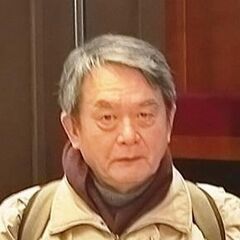Difference between revisions of "Satoshi Sonotani"
From Sega Retro
| (3 intermediate revisions by the same user not shown) | |||
| Line 5: | Line 5: | ||
| dod= | | dod= | ||
| employment={{Employment | | employment={{Employment | ||
| − | | company=[[Sega | + | | company=[[Sega Enterprises, Ltd.|Sega Enterprises]] |
| start=1991-01{{ref|https://archive.ph/sGTns}} | | start=1991-01{{ref|https://archive.ph/sGTns}} | ||
| end=2001-10{{ref|https://archive.ph/sGTns}} | | end=2001-10{{ref|https://archive.ph/sGTns}} | ||
| Line 16: | Line 16: | ||
==Career== | ==Career== | ||
| − | After working at DIC corporation for almost 11 years, {{PAGENAME}} joined [[Sega Enterprises]] in 1991 as an assistant manager, and later general manager, of their overseas departments. His most notable move as general manager was in 1996, when he played a role in the merger & acquisition of [[DreamWorks]]{{ref|https://archive.ph/PZ98p}}. That same year, he became group leader, first of the Overseas [[Logistics Planning Group]]{{ref|https://archive.ph/sGTns}}. Starting in February 2001, Sonotani was group leader of the administration group, New Business Development Department, where he and 3 subordinates were "responsible for building new business model making use of Dreamcast game machine logic and online game system".{{ref|https://archive.ph/sGTns}} | + | After working at DIC corporation for almost 11 years, {{PAGENAME}} joined [[Sega Enterprises]] in 1991 as an assistant manager, and later general manager, of their overseas departments. His most notable move as general manager was in 1996, when he played a role in the merger & acquisition of [[DreamWorks SKG]]{{ref|https://archive.ph/PZ98p}}, which led to the creation of [[Sega GameWorks]]. That same year, he became group leader, first of the Overseas [[Logistics Planning Group]]{{ref|https://archive.ph/sGTns}}. Starting in February 2001, Sonotani was group leader of the administration group, New Business Development Department, where he and 3 subordinates were "responsible for building new business model making use of [[Dreamcast]] game machine logic and online game system".{{ref|https://archive.ph/sGTns}} |
He was transferred out of Sega in October 2001, to become the director of new company Xside Corporation. Sega held 15% of shares in the company. It went bankrupt in 2003, and he has since joined various companies and left, sometimes for personal reasons, other times due to bankruptcy{{ref|https://archive.ph/sGTns}}. | He was transferred out of Sega in October 2001, to become the director of new company Xside Corporation. Sega held 15% of shares in the company. It went bankrupt in 2003, and he has since joined various companies and left, sometimes for personal reasons, other times due to bankruptcy{{ref|https://archive.ph/sGTns}}. | ||
Latest revision as of 04:18, 20 October 2023

|
| Satoshi Sonotani |
|---|
| Employment history:
Divisions:
|
| Role(s): General manager[1] |
| Education: Kamakura High School(Law, 1971-1974)[2], Chuo University (Law, 1976-1980)[2] |
This teeny-tiny article needs some work. You can help us by expanding it.
Satoshi Sonotani is a Japanese businessman, consultant, compliance officer and much more, who worked at Sega Enterprises for 10 years as an assistant manager, general manager and group leader.
Career
After working at DIC corporation for almost 11 years, Satoshi Sonotani joined Sega Enterprises in 1991 as an assistant manager, and later general manager, of their overseas departments. His most notable move as general manager was in 1996, when he played a role in the merger & acquisition of DreamWorks SKG[2], which led to the creation of Sega GameWorks. That same year, he became group leader, first of the Overseas Logistics Planning Group[1]. Starting in February 2001, Sonotani was group leader of the administration group, New Business Development Department, where he and 3 subordinates were "responsible for building new business model making use of Dreamcast game machine logic and online game system".[1]
He was transferred out of Sega in October 2001, to become the director of new company Xside Corporation. Sega held 15% of shares in the company. It went bankrupt in 2003, and he has since joined various companies and left, sometimes for personal reasons, other times due to bankruptcy[1].
Production history
- Gunblade NY (Model 2; 1996) — Special Thanks
- Decathlete (Saturn; 1996) — Special Thanks[3]
External links
References
- Archived reference without original link
- Sega Enterprises, Ltd. employees
- Overseas Logistics SectionCategory:Archived reference without original link staff members
- USA Sales SectionCategory:Archived reference without original link staff members
- USA & Europe Sales Dept.Category:Archived reference without original link staff members
- Overseas Logistics Planning GroupCategory:Archived reference without original link staff members
- Royalty Management GroupCategory:Archived reference without original link staff members
- Administration GroupCategory:Archived reference without original link staff members
- All people
- Sub-stubs